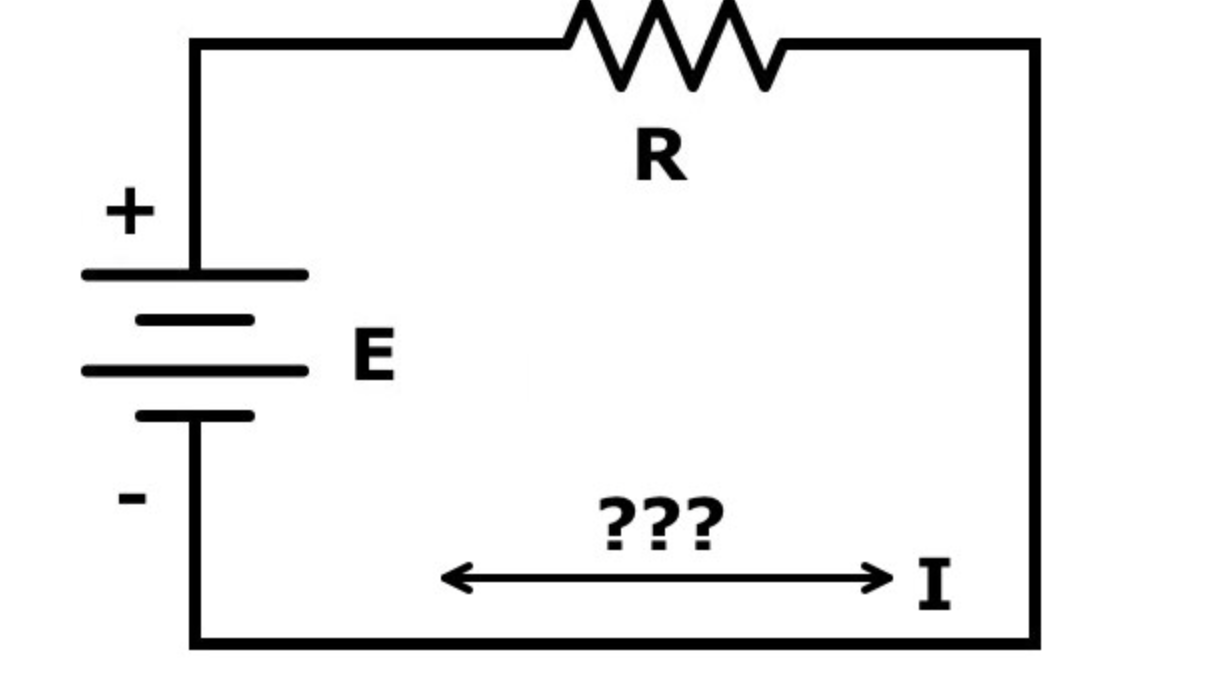Which way does current really flow?
Which way does current really flow?
By Dan Romanchik, KB6NU
I was recently taken to task by one of my blog readers regarding my description of current flow in my No Nonsense Technician Class License Study Guide. He wrotYou casually say that current flows from Positive to Negative (with cool accompanying directional arrows), without any accompanying qualifying statement. Over the years I have looked at ALL the views on the subject. Positive to Negative is NOT what I was taught 48 years ago, and I have never seen a good reason to change my view.

In a subsequent email, he pointed me to a Nuts ‘n Volts article, “Which Way Does Current Really Flow?” and asked my opinion. In the article, the author, who is a ham by the way, does a good job of explaining the various types of current flow.
I agree that in electronic circuits electrons flow from negative to positive, but it really doesn’t matter. I agree with one the article’s commenters who says,
This is a silly argument. It’s like comparing apples and oranges and challenging people to take sides.
Electron flow is not current flow. Electron flow is easy to understand, an actual physical property, and a real help in understanding vacuum tube operation. But it falls apart when one needs to understand complex electronic systems.
[Conventional] current flow is a mathematical abstraction. It is defined as a net flow of positive charge, irrespective of the polarity of the physical charge carriers — whether electrons, holes, positive or negative ions, or whatever.
When looking at any circuit containing a resistance with a voltage across it, conventional current through that resistor says that the voltage drop occurs as the current through it meets resistance. On the other hand, in negative (electron) flow, a voltage INCREASE will correspond to the ‘current’ flow through it, clearly violating physical laws. Conventional current flow is consistent with the laws of physics and those of other engineering disciplines.
You are correct that engineers, professors and scientists use conventional current flow. That is not because they are too obtuse to understand electron flow; I assure you they fully understand it. It is because in their world they have to solve more general problems involving complex math and science, and, again, conventional current flow is consistent with physical laws.
It is unfortunate that electron flow and current flow are so often confused. They both have their place.
After reading that article, I thought I’d see what the ARRL Handbook has to say about current. In the 1963 edition, they don’t mention electron flow at all. They have one diagram showing the direction of current flow in both series and parallel circuits, but the voltage source has no polarity. It’s simply labelled “Source of E.M.F.” Diagrams giving practical examples of series and parallel circuits do include a battery, and if the reader were to mash up the two diagrams, they would conclude that current flows from the positive terminal to the negative terminal.
The most recent edition of the Handbook that I have is the 2005 edition (it might be time to get another copy!). It says,
Electrons move from the negative to the positive side of the voltage, or EMF, source. Conventional current has the opposite direction, from positive to negative. This comes from an arbitrary decision made by Benjamin Franklin in the 18th century. The conventional current direction is important in establishing the proper polarity sign for many electronics calculations. Conventional current is used in much of the technical literature. The arrows in schematic symbols point in the direction of conventional current, for example.
Having said all that, I really don’t see that there’s much of a controversy here. I did learn to think of current as conventional current in college, although it was mentioned that electrons actually flow in the opposite direction. Using the concept of conventional current has never seemed to hold me back. I’ve been able to design circuits and repair electronic equipment thinking that current flows from positive to negative.
Although it’s a departure from my “no nonsense” style, I am thinking of including a sidebar, similar to the paragraph above from the 2005 Handbook explaining the two ways of looking at current flow. What do you think?
When he’s not trying to figure out which way current flows, Dan blogs about amateur radio at KB6NU.Com, teaches ham radio classes, and operates CW on the HF bands. Look for him on 30m, 40m, and 80m. You can email him at cwgeek@kb6nu.com.